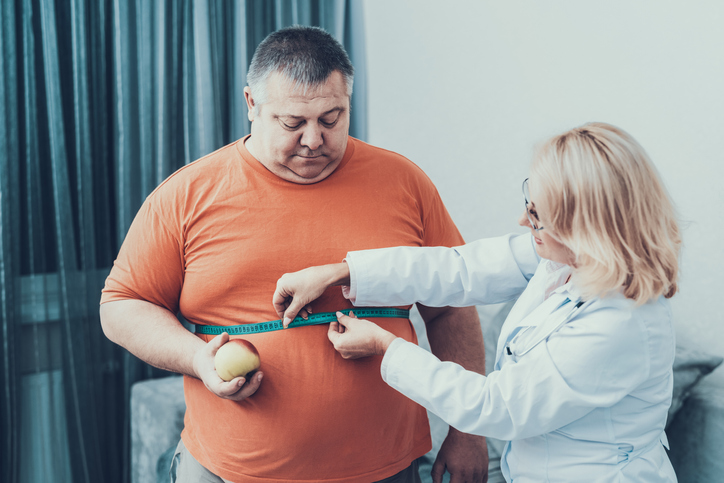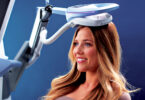With our busy lives, we often don’t have the time for proper nutrition and exercise. Poor dietary habits and a sedentary lifestyle have health consequences, including certain cancers, anxiety and depression, coronary disease, high blood pressure and obesity. There is growing awareness of the devastating impact of obesity on vital organs, especially the liver. The liver is the largest solid organ in the body, situated in the upper part of the abdomen on the right side. Obesity can cause insulin resistance, resulting in a buildup of blood sugar and an increase in the amount of free fatty acids circulating in the blood and inside the liver cells. A buildup of fat in the liver is also common in those with type 2 diabetes, increasing the risk of liver fibrosis, cirrhosis or ultimately, liver cancer. Furthermore, non-alcoholic fatty liver disease (NAFLD) has been found to be a strong and independent risk factor for pre-diabetes in the general adult population.
The Liver Serves a Vital Function
The liver performs about 500 critical jobs — removing toxins, clearing medication from your body and metabolizing food. It also adjusts cholesterol levels, stores and regulates glucose levels, builds proteins and makes bile, which aids the absorption of fats, stores sugar for when it’s needed and regulates hormone levels.
Your liver is a fundamental part of the body’s overall regulation and good health. It’s important to maintain a good clean liver by eating fresh, whole foods and skipping the high-fat, high-sugar diet that one study determined was a source of liver inflammation. Liver care also means avoiding all alcohol — particularly for those with pre-existing liver disease — and increasing physical activity to burn carbohydrates, fats and proteins, which helps the liver process them more efficiently.
When the liver stops working, it accumulates toxins, fails to digest food and medications stay in the body for longer than needed. Liver malfunction can lead to serious illness. A fast-growing epidemic among the obese, NAFLD can over time lead to a more serious state of disease called fibrosis — scarring of the liver — or a later, more dangerous stage called cirrhosis, which can lead to liver failure.
What is Non-Alcholic Fatty Liver Disease (NAFLD)?
Fatty liver disease is a silent epidemic affecting millions of Americans and imposing significant financial burden on the U.S. health care system. The American Liver Foundation estimates that about 100 million Americans — more than 30 percent of the U.S. population — have NAFLD, which is the most common type of liver disease in the Western world.
NAFLD encompasses a spectrum of diseases, ranging from simple steatosis to nonalcoholic steatohepatitis (NASH). Advanced fibrosis and cirrhosis due to NAFLD is likely to become the main indication for liver transplants in the country in the coming years. What’s more, the presence of steatosis is associated with metabolic syndrome, increasing the risk of cardiovascular diseases, which often result in a heart attack or stroke. The increasing prevalence of type 2 diabetes and obesity will likely increase the demand for liver transplants, while reducing the supply of healthy livers available.
What Can You Do to Help Your Liver?
NAFLD can be reversed if caught in the early stages and accompanied by lifestyle changes. As the first line of defense against the advancement of liver disease, your primary care physician (PCP) is a source of information and screening for the detection of serious liver disease.
The good news is that most liver disease is avoidable. Health care providers have new tools that provide physicians with rapid, painless and consistent results that enable them to make the most informed treatment decisions, while also ruling out the need for an expensive liver needle biopsy or other invasive testing. During an annual physical or upcoming appointment with your doctor, make sure to ask about liver screening and learn as much as you can about avoiding liver disease, especially if you are obese or have diabetes. In fact, nationwide, more than half of adults with NAFLD are obese, and 30 percent or more are overweight. Conversely, being overweight or obese is responsible for causing about 85 percent of fatty liver disease.
The Value of Non-Invasive Screening Methods
A growing number of health care providers, including PCPs, have started adopting non-invasive screening methods that can detect NAFLD in patients with co-morbid conditions that put them at high risk of disease, in the absence of indications or warning signs. FibroScan, for example, is a rapid and painless approach that can be performed in the doctor’s office as part of an annual exam and is covered by Medicare, Medicaid and most insurance plans.
Ask your PCP about guidance on how to protect your health and how a two-minute screening can offer quick insight into your liver health to quantitatively estimate liver fat content and liver stiffness. Test scores provide immediate information the physician can use to make a referral to a specialist or recommend additional assessments.
It’s important to note that the 2019 Standards of Medical Care in Diabetes issued by the American Diabetes Association recommend that patients with type 2 diabetes or pre-diabetes and elevated liver enzymes or fatty liver on ultrasound should be screened for the presence of liver disease. To test for fibrosis, your doctor may recommend a non-invasive test — elastography — to help identify advanced liver disease and aid in the evaluation and management of your care.
Avoiding NAFLD
The best way to fight liver disease is to avoid it, if at all possible. Maintaining a healthy weight and eating a balanced diet are essential. People who are obese or even somewhat overweight are in danger of having a fatty liver that can lead to NAFLD, one of the fastest growing forms of liver disease. Also, those with type 2 diabetes may be at a higher risk for progressive liver disease.
Diet and exercise are the two most feared words in medicine. It is so easy to provide the advice on diet and exercise while executing is so difficult. But even a weight loss of 5 percent can have significant impact in reducing liver fat. The key is to avoid high-calorie meals, saturated fat, refined carbohydrates (such as white bread, white rice and regular pasta) and sugars. Regular, consistent exercise helps to burn triglycerides for fuel and can also reduce liver fat. These two words of diet and exercise can help prevent serious liver disease in the future.
Liver health matters, and a healthy lifestyle is key to good liver health.




